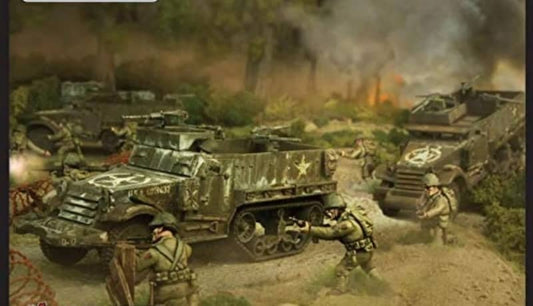There’s an art to balancing cinematic scenery with open gameplay in a wargame, and it can be challenging to get it just right. Keep reading for tips on how to find that perfect balance for the ideal, immersive, fun, and functional wargame.
3 Ways to Balance an Immersive Environment with Unobstructed Gameplay
Balancing cinematic scenery and open gameplay in wargaming is all about finding the middle ground between a visually color-rich and immersive environment and a layout that promotes fair and unobstructed play. Creating too much of a cinematic setup may obstruct the actual wargame, while purely focusing on open gameplay might sacrifice the immersive experience that a well-decorated gaming scenario provides.
1. Firstly, cinematic elements should be thoughtfully placed rather than randomly distributed. Positioning larger structures at the outer edges, for instance, maintains a clear line of sight across the play area, while aesthetic accessories can be used to demarcate specific zones or boundaries.
2. Secondly, the use of scalable and modular elements can greatly improve the balance between form and function. With these, players can modify the environment as game dynamics change, adding a strategic layer to the game while keeping the environment engaging.
3. Lastly, the key to achieving this balance is to understand your players' preferences. Some might prefer a lush, dense environment, while others might favor a minimalist gameplay-centric setting. By establishing a flexible system where decorative features contribute to gameplay rather than hinder it, you'll ensure a satisfying experience for all players.
Keeping these points in mind, wargamers can achieve a balance that merges the riveting appeal of cinematic scenery with the exhilarating challenge of open gameplay.
Creating an Immersive Experience that Complements the Gameplay
Balancing cinematic scenery with open gameplay in wargaming is an art. It's about creating an immersive environment that complements the gameplay rather than hindering it. Start by defining key areas for movement and conflict. Then, add elements of scenery that amplify the narrative without confusing the gameplay. Consider the scale of your miniatures. The right balance brings the game alive, making it not just a tactical challenge, but a visual feast as well.
Use Scenery To Enhance Gameplay and Listen To Player Feedback
First and foremost - respect player agency. Design scenarios for flexibility, not funneling players into one "right" path.
But don't neglect the atmosphere and immersion either. Cinematic scenery brings the world alive, but it should complement gameplay, not restrict it. Find that sweet spot where visuals enhance player actions rather than dictate them.
I remember one project where we created the most visually stunning map possible. But when playtesting, we realized it was art, not a playground. The intricate terrain actually hindered movement and strategy - a great lesson in gameplay-first design.
Playtesting and feedback from dedicated wargamers is invaluable. They'll quickly tell you if scenery gets in the way or boosts the experience.
Balancing gameplay freedom and cinematic visuals takes understanding both game design and your community. It's about respecting agency, using scenery to enhance not limit, and listening to player feedback. When it comes together, you get the stories and open-ended experience wargamers crave!
Patrick Martin
Don’t go Overboard with Scenery, Consider Game Mechanics, and Keep it Fun
In my opinion, balancing cinematic scenery with open gameplay in wargaming can be a bit of a tightrope walk, but it's definitely doable. You just need to strike the right balance. Here's how I'd go about it:
● First off, I'd suggest not going overboard with the scenery. While a visually stunning battlefield can certainly add to the immersion, too much of it can hinder the actual gameplay. So, keep it simple but effective. Use scenery that enhances the game's aesthetics without obstructing the play area.
● Next, consider the game mechanics. Ensure that the scenery doesn't interfere with the rules of the game. For instance, if a piece of scenery blocks line of sight or movement paths, it might not be the best choice.
● Finally, remember that the main goal of wargaming is to have fun. So, if a piece of scenery adds to the enjoyment of the game, even if it slightly complicates gameplay, it might be worth including. After all, who doesn't love a dramatic, last-stand fight atop a beautifully crafted hill?
In the end, it's all about finding that sweet spot between a cinematic experience and an enjoyable game. And remember, if it doesn't work, you can always tweak it for the next game!
This is a crowdsourced article. Contributors' statements do not necessarily reflect the opinion of this website, other people, businesses, or other contributors.






